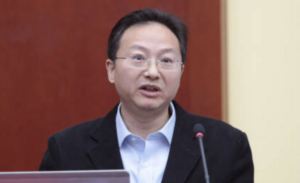DOJ stands by “guilty” verdict for ex-JPMorgan Forex trader
The Department of Justice seeks to rebuff an attempt by Akshay Aiyer to secure judgment of acquittal or a new trial.

The Department of Justice (DOJ) has opposed an attempt by Akshay Aiyer, a former JP Morgan Forex trader, to rebuff his conviction.
As per documents filed by the Department on January 27, 2020, with the New York Southern District Court and seen by FinanceFeeds, the US authorities insist that the jury has delivered a sound verdict which should not be overturned.
The Government argues that it proved beyond a reasonable doubt that Akshay Aiyer was guilty of knowingly joining a conspiracy to fix prices and rig bids in the foreign exchange market for Central and Eastern European, Middle Eastern, and African (CEEMEA) currencies.
The case charged by the government was a conspiracy between horizontal competitors to fix prices and rig bids, a per se violation of the Sherman Act. The Supreme Court has spoken on what makes an agreement horizontal: it is “an agreement between competitors at the same level of the market structure,” as opposed to “combinations of persons at different levels of the market structure, e.g., manufacturers and distributors.” The evidence went directly to a horizontal price-fixing and bid-rigging conspiracy, the Court instructed the jury regarding such a conspiracy, and the jury found the defendant guilty of such a conspiracy.
In his attempt to oppose the verdict, Aiyer claims that the record demonstrates that he was in a vertical relationship with his co-conspirators, a position that he raised at trial. But the DOJ argues that the record contains abundant evidence that the defendant was in a horizontal relationship with his co-conspirators, including the testimony of two co-conspirators and three customers.
The indictment alleged that Defendant and his co-conspirators were traders at “rival banks” that were in continuous competition with each other in the FX market: they competed with each other to win customer orders, and they competed in the interdealer market, including on electronic platforms, as they sought to offset positions resulting from customer orders. As such, they were competitors, the Department says.
Both Jason Katz, who worked at Barclays and BNP Paribas, and Christopher Cummins, who worked at Citigroup, testified that the defendant was an active and knowing participant in the conspiracy to fix prices and rig bids. For example, Cummins testified:
Q. Mr. Cummins, did there come a time when you came to an understanding with Mr. Aiyer regarding your trading?
A. Yes.
Q. Was this the same understanding or a different understanding than the one you had with Mr. Katz?
A. It was the same.
Q. Pursuant to this understanding, what did you do?
A. We helped each other out during the trading day.
Q. What does that mean? How did you do that?
A. I did the same things that I did with Katz.
Q. Like what? Give me an example.
A. Like if a client called in for price, called a few of us at once, I would indicate what I was showing or what I thought the client wanted to do, pass that along to the other guys in the chat. They would pass it along to me. And then we could kind of move our pricing accordingly to either win or lose the trade and still make the client think it was competitive.
…
Q. And how often did you agree to do this conduct with the defendant, Mr. Cummins, and Mr. Williams?
A. When the opportunity manifested itself. It wasn’t every day. I think from the point of not competing with each other, that was kind of an undercurrent that would just be there on a constant basis. We were always trying to, you know, lift the ship, have everyone make more money. So that was kind of there on a more constant basis. But in terms of inputting the fake trades to the global system to try to influence which direction it was going, it was when the opportunity came up.
It wasn’t on an everyday basis.
Q. When did you have the agreement with the defendant, Mr. Aiyer?
A. From when I joined Barclays in around 2010.
The Government stresses that the jury found that the defendant was guilty of conspiring with his competitors, thus rejecting the defendant’s suggestions that his co-conspirators were not competitors. There is no basis to overturn the jury’s finding in this regard, the Government says.
Aiyer complains that the Court failed to conduct an elaborate economic inquiry in light of his purported procompetitive justifications. But the Department notes that such an inquiry is impermissible for per se illegal conduct like price-fixing and bid-rigging conspiracies.
Finally, Aiyer moves under Federal Rule of Criminal Procedure 33 for a new trial, but the Government argues that the defendant’s arguments have no merit. For instance, Aiyer argues that the government’s witnesses, specifically Katz and Cummins, were not credible.
The Government says that the defendant’s argument is based on cherry-picked moments of cross-examination and an inaccurate interpretation of the standard under Rule 33. He argues that such testimony should be disregarded because it was “riddled with inconsistencies.” Aiyer attacks Katz’s cross-examination testimony as to his conduct with other traders and takes issue with Katz’s inability, as a lay person, to identify what of his conduct (with various traders) constituted an antitrust violation or other illegality. However, the Government notes, Katz is not an attorney and his uncertainty as to such legal distinctions does not undermine his credibility.
Aiyer argues that Katz and Cummins testified inconsistently on direct and cross as to particular trading episodes. The DOJ notes that the alleged inconsistencies are a far cry from an “extraordinary circumstance” involving “patently incredible” testimony and that the witnesses were extensively cross-examined, testifying at least twice as long on cross-examination than they did on direct, which allowed the jury to effectively assess their credibility.
Further, according to the Government, the defendant fails to contend with the fact that the testimony of co-conspirators Katz and Cummins was largely consistent between them and was corroborated by the documentary evidence.
Collectively, their testimony, and the rest of the evidence admitted at trial, supports the jury’s sound verdict, the Government concludes.









